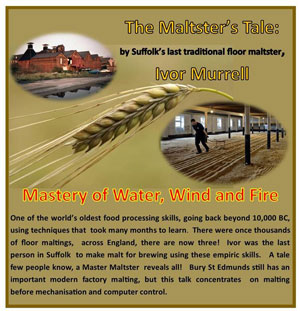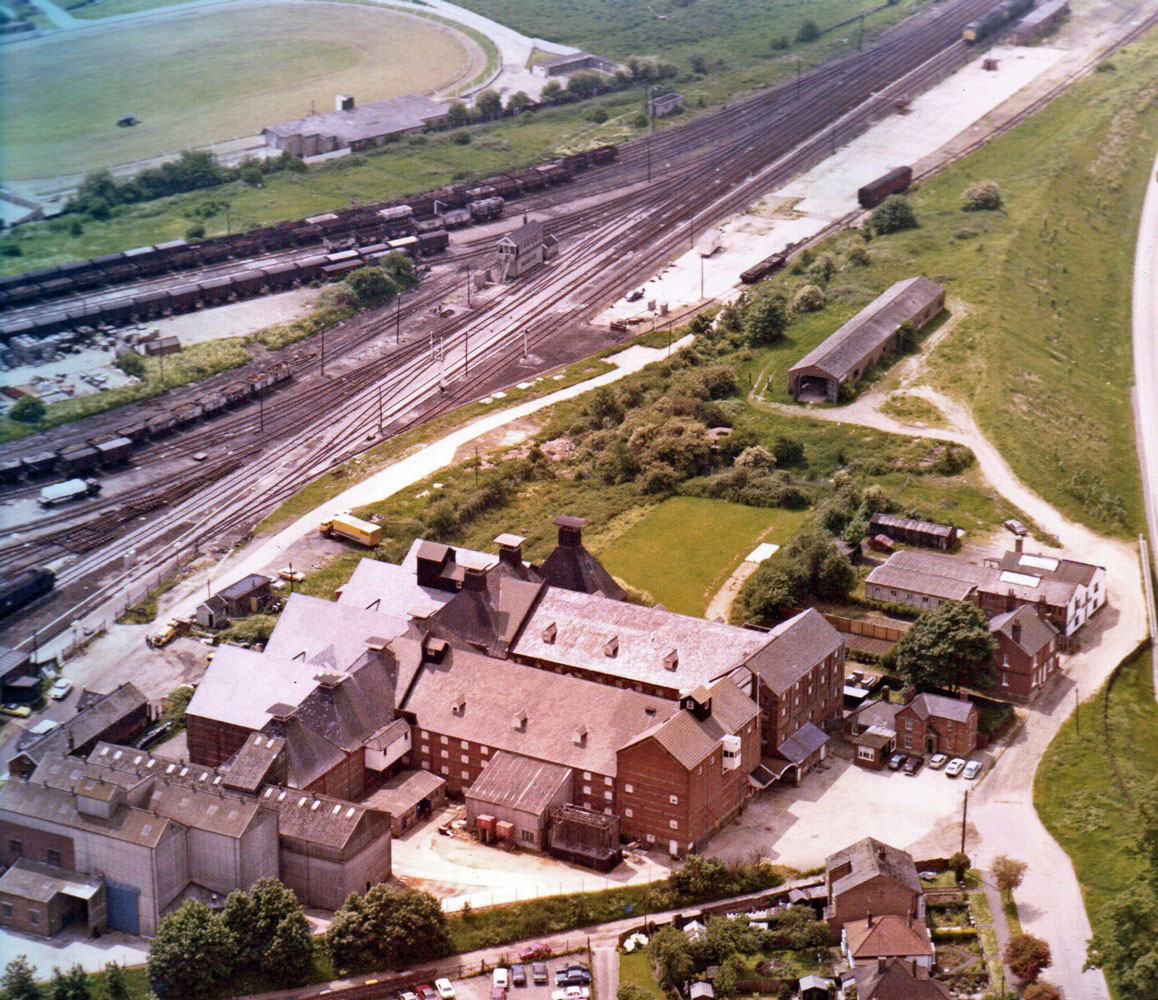Ivor Murrell on Gough's Maltings on Thingoe Hill
I keep getting enquiries about Gough’s maltings in Thingoe Hill via the website, (www.versifier.co.uk) particularly from descendants of Jesse Gough.
I was scheduled to give an hour lecture for the Bury Past and Present Society in the Guildhall on November 2nd 2020 (Covid safety arrangements permitting) where you could see over 100 images in my PowerPoint presentation of traditional floor malting, and with due reference to Gough's maltings. (This talk eventually took place on Monday 3rd October, 2022).
I don’t take up many requests to speak, but I was particularly keen to deliver this talk in Bury. See below the note I sent to Bury Past and Present Society. I have given various versions of the talk to other Suffolk towns that had floor maltings. I do this whilst I am still able and the talk attracts a lot of interest --- so much has been forgotten. I call one version of my talk ‘The Art and Mystery of Malting’.
Several years ago I gave a lot of help to setting up a small malting museum in The Cut theatre in Halesworth, which had previously been a malting, but nobody knew how it had operated. I had to ignore the modern changes to provide them with the information for
modelmaker Nigel Purdy to made a ‘fly though’ video of the maltings as it existed in the 1900’s. I think that video is still shown in the small museum.
I would be happy for you to post "Walking the Floors" on your website - see next page. I wrote it the week we fired the last kiln at Goughs and gave copies to my team.
Ivor Murrell's explanation of the aerial picture shown below
The asbestos buildings on the bottom left are the barley silos. These are linked to the red brick barley drying kiln (with two kiln cowls) then comes the full length of the new house maltings (built in 1890) with the Old house maltings beyond (built in 1885) and beyond that the single cowl of the malt redry kiln.
You ‘read’ the operation of both malthouses from right to left. The transverse buildings at the right hand side are the barley granaries, then next are the germinating floors (five in each) up to where the fire wall comes through the roof. On the other side of the fire wall are the malt kilns (2 cowls for each house kiln) then beyond them is the finished malt area and malt stores. This is a very typical layout of a Victorian floor malting.
I can remember the night of the great storm on October 16th 1987 --- ,I was up on the roof valley between the old house Kiln Cowls very late that night trying to see if the roof cowl covers were OK (two were ripped off by the 80 mph plus wind) and as the slates were being ripped off the roof I suddenly realised that as I was the only person at the maltings, I was being incredibly stupid and left the storm to it. The damage was extensive and costly to repair.
Links with the railway
When I joined Thingoe Maltings as an assistant manager in 1968 we were firing both malt kilns with coal. The coal came into the Maltings in a single truck of coal, shunted onto our line. We then had to push the truck by hand down our line until we reached a mini turn table. There we could turn the truck through 90 degrees so that we could push it down the railway line in the ‘arcade’, the space between the old and new house Maltings. It could then be unloaded by the kiln fireman into the bunkers in both kiln areas.
I was told one man had been seriously injured after the war by not positioning himself correctly and then being crushed between the truck and the arcade wall.
By the time I was manager, about 4 years later, (1972?) I checked our coal burning use and found that it was over 60 therms per ton of malt kilned…full traditional use. I persuaded the company to install a gas line connection and modern gas burners, which meant no more coal and much more efficient kiln heating. This change made it possible to save another 30 % a few years after that when the heat was reused through a new massive heat exchanger plus direct circulation of heat between the two kilns, which were staggered in use so the heat from the finishing kiln could be directed then through the one just loaded.
One more thing, barley always came in by road, but I was told by the old foreman (George Paske) that before the war Goughs made malt for a customer that went out by rail, he told me it was for Guinness, but I cannot confirm that.
Best wishes
Ivor
Ivor Murrell
Website; www.versifier.co.uk



